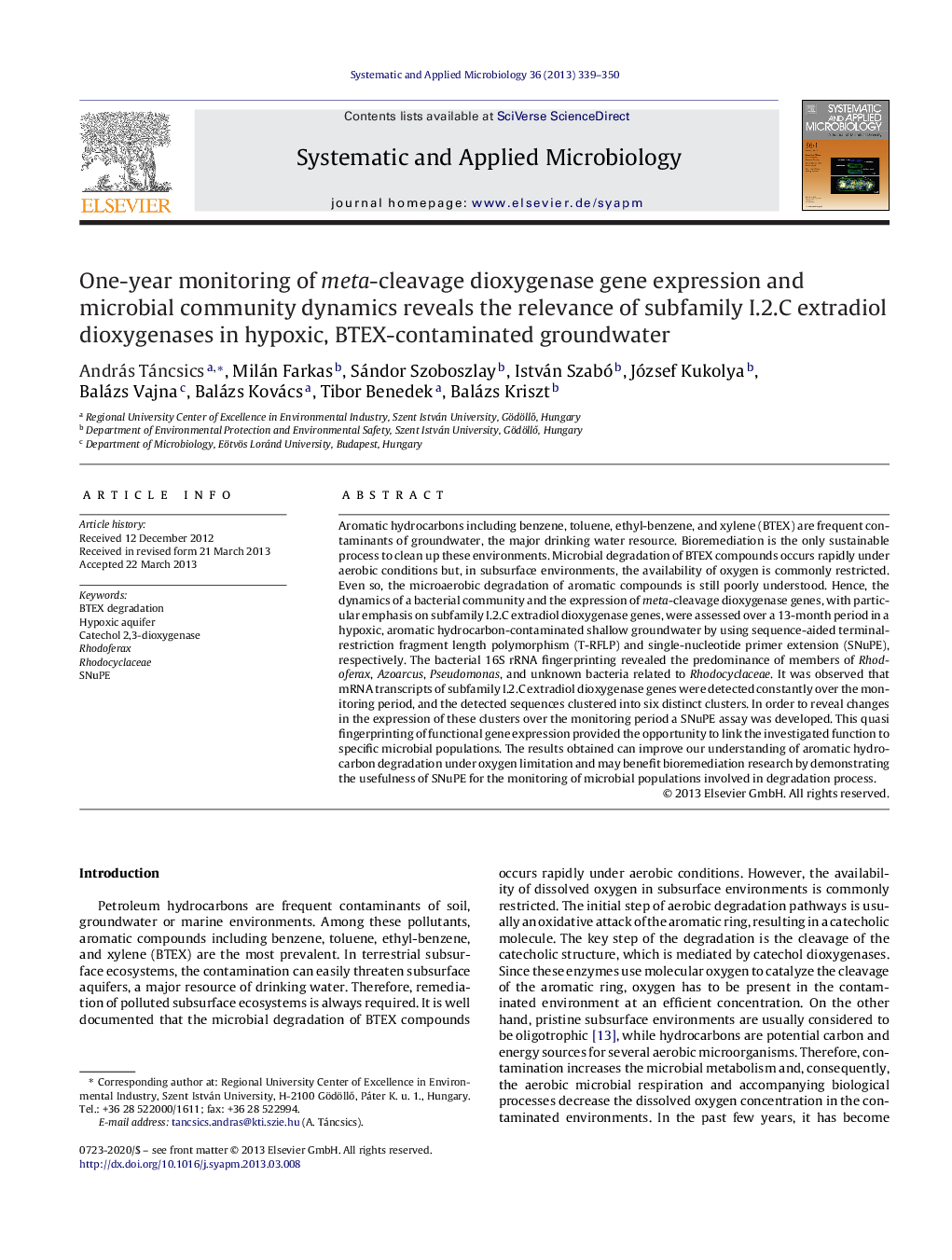| کد مقاله | کد نشریه | سال انتشار | مقاله انگلیسی | نسخه تمام متن |
|---|---|---|---|---|
| 2063773 | 1076782 | 2013 | 12 صفحه PDF | دانلود رایگان |

Aromatic hydrocarbons including benzene, toluene, ethyl-benzene, and xylene (BTEX) are frequent contaminants of groundwater, the major drinking water resource. Bioremediation is the only sustainable process to clean up these environments. Microbial degradation of BTEX compounds occurs rapidly under aerobic conditions but, in subsurface environments, the availability of oxygen is commonly restricted. Even so, the microaerobic degradation of aromatic compounds is still poorly understood. Hence, the dynamics of a bacterial community and the expression of meta-cleavage dioxygenase genes, with particular emphasis on subfamily I.2.C extradiol dioxygenase genes, were assessed over a 13-month period in a hypoxic, aromatic hydrocarbon-contaminated shallow groundwater by using sequence-aided terminal-restriction fragment length polymorphism (T-RFLP) and single-nucleotide primer extension (SNuPE), respectively. The bacterial 16S rRNA fingerprinting revealed the predominance of members of Rhodoferax, Azoarcus, Pseudomonas, and unknown bacteria related to Rhodocyclaceae. It was observed that mRNA transcripts of subfamily I.2.C extradiol dioxygenase genes were detected constantly over the monitoring period, and the detected sequences clustered into six distinct clusters. In order to reveal changes in the expression of these clusters over the monitoring period a SNuPE assay was developed. This quasi fingerprinting of functional gene expression provided the opportunity to link the investigated function to specific microbial populations. The results obtained can improve our understanding of aromatic hydrocarbon degradation under oxygen limitation and may benefit bioremediation research by demonstrating the usefulness of SNuPE for the monitoring of microbial populations involved in degradation process.
Journal: Systematic and Applied Microbiology - Volume 36, Issue 5, July 2013, Pages 339–350